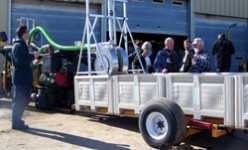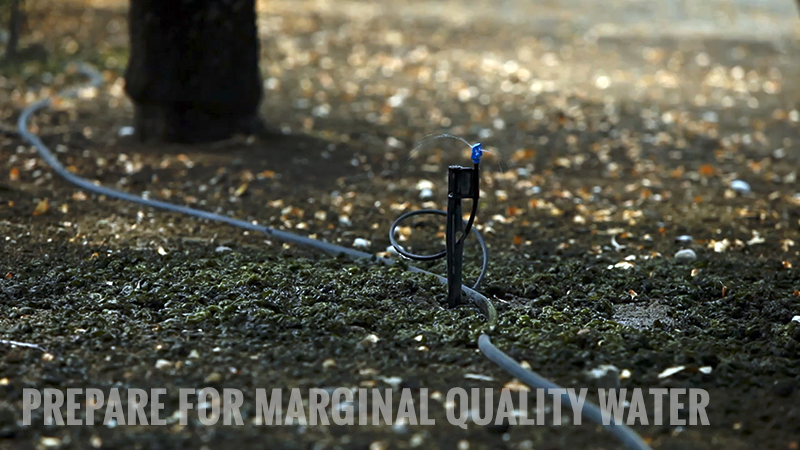Novel Vacuum Apple Harvester Unveiled

For the past year, fruit growers Mike Rasch and Chuck Dietrich, along with Phil Brown of Phil Brown Welding in Conklin, MI, have been tinkering with and modifying the design of an apple harvesting prototype they came up with. The latest version of this unit was unveiled during the International Fruit Tree Association’s annual conference in the Grand Rapids area in early March, and it certainly caught the eye of those in attendance. “Everything looks very encouraging at this point,” says Rasch. “We’re at the point where we have a good design that we can run with.”
The prototype uses a vacuum system, with hoses that can pull the picked fruit into bins on a trailer. Up to four pickers can work at the same time, whether they’re on a platform or picking from the ground.
Flexibility Is Key
Rasch points to a long list of benefits this model provides to a grower, with perhaps the main advantages being adaptability to different equipment, and a modular power supply.
• Ease in accessorizing. This new prototype can be retrofitted to the equipment currently used by the grower. “The key was to make the power unit modular, so it can adapt to anything that can pull it, with or without a bin trailer,” says Rasch. “We’re not counting on just a tractor or platform as a carrying mechanism.” Because the equipment is manufactured at Phil Brown’s operation, it can be connected to the company’s man lifts and box shuttles, along with similar equipment made by other manufacturers.
• More freedom for pickers. “The beauty of the vacuum system is that it does not lock you into a rigid work area,” says Rasch. “You can carry the hose to wherever you are, whether you’re on a platform or on the ground.”
• Minimal bruising. “We’ve been able to pick faster while still ending up with half the bruising that results from hand-picked fruit,” says Brown, who made sure to trial the machine on varieties such as Goldens that are prone to bruising. As the apples move through the hoses, they go through an automatic decelerator until they roll off a fan-like device just inches above the highest filled point of the bin.
The next major focus, says Rasch, is on the durability and production efficiency of the unit, which (along with labor availability) will pave the way for meeting the needs of the grower.
Getting Closer
This past year, Rasch, Dietrich, and Brown formed an LLC called DBR Conveyor Concepts to develop, manufacture, and market the machine. This also includes the process of filing for a patent, which is currently pending. Each of these men brought their experiences in growing, engineering, and manufacturing to the partnership, which they hope will be beneficial.
So far Extension associates including Phil Schwallier at Michigan State University have already tested the device, including evaluating it side-by-side with a hand-picking crew, with positive quality results. As part of a USDA-funded project, they are now preparing to contract with Jim Schupp and Tara Baugher at Penn State University (PSU) for use in Pennsylvania peach and apple orchards this fall. It will be attached to a PSU platform for further evaluation. Assuming all goes well, the next step will be a similar partnership and evaluation with Washington State University’s Karen Lewis and Jim McFerson.
Rasch says there’s already a big interest among growers both nationally and abroad, which means the quicker to market the better. “We need to do some more quality control and durability testing, with more running time, before the end of this year,” says Rasch. Once that happens, each partner hopes it will be full steam ahead. “We’re happy with the input we’ve received at the university level, and I’m encouraged about the chance to get something out there,” Rasch says.










